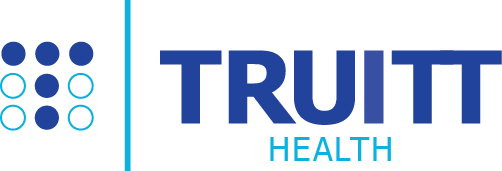
Truitt Health
Chris uses Lucidchart diagrams to perform operations analysis to identify areas where organizations can function more effectively.
Key benefits
- CAPTURE WORKFLOWS
- Chris uses Lucidchart to map out the current process at an organization. He uses templates to avoid starting from scratch everytime and creates clean and professional diagrams.
- OPTIMIZE PROCESSES
- Chris analyzes the existing workflows to identify areas of improvement so he can then re-engineer the process.
- PRESENT SOLUTIONS
- Lucidchart visuals help Chris effectively present his proposed solution to the client as he walks them through the current and future state diagrams.
SIZE: Small (1-100 employees)
Truitt Health is a leading expert in healthcare consulting, helping healthcare leaders to optimize their operations, harness their technology and take control of their paychecks.

Think about the last time you went to the clinic or hospital. Now think through all the different processes and procedures you saw and how many people were involved... Hint: It’s a long list.
Healthcare organizations can feel like one giant machine made up of a sometimes overwhelming number of moving parts. Inevitably, a machine of that size will experience breakdowns or part replacements.
Chris Crowell, a consultant at Truitt Health, tries to make sure those occurrences are rare. He and his fellow consultants work with healthcare organizations to align their strategy, technology, and operations so they work together seamlessly. A crucial part of their consulting work is performing operations analysis to identify areas where organizations can function more effectively.
As operating expenses continue to rise and the reimbursement paradigm shifts more to value-based care in the healthcare industry, it is increasingly important for healthcare organizations to focus on efficiency and standardization. Eliminating redundancy and replicating best practices not only decreases operational costs but maximizes cash collections needed to thrive in the ultra-competitive healthcare space today.
However, the inefficiencies Truitt Health finds can be difficult to effectively communicate to clients who are so used to completing these same routines day in and day out.
What makes it easier is to show rather than tell. And whenever Truitt Health needs to show, they turn to Lucidchart.
Mapping the current workflow
As Chris starts working with a client, he meets with them to gather information on how they currently operate. Afterward, he immediately documents this current workflow in Lucidchart.
“Lucidchart helps us capture the workflows for different clinics and hospitals. Then we can perform analysis on top of that. We are able to create diagrams for the client that are clean, organized, visually appealing, and professional,” Chris explains.
Chris doesn’t have to start from scratch every time he builds diagrams for a client. Instead, he saves time and brainpower by starting with an existing template and customizing it for a specific client’s needs. Then, he organizes the diagrams by project in Lucidchart folders.
“A lot of the workflows are similar from specialty to specialty, so we are able to really use templates effectively,” he says. For example, Chris has a template for the check-in process that he can copy and customize for a specific specialty. By observing the two separate check-in workflows in Figures 1 and 2 below, it is easy to see remnants of the template and how it was customized effectively for each respective specialty.

Figure 1

Figure 2
Optimizing the workflow
These process workflows help Chris identify areas of improvement. He highlights problem areas, signifying pieces that could be automated or steps that could be eliminated. For example, Chris marks, in yellow, processes that are wasting time and resources by still being done on paper.
After identifying inefficiencies, Chris re-engineers the existing workflow. He builds the optimal workflow that resolves existing issues. He is then able to compare the current and future states side by side.
Presenting to clients
At this point, Chris is confident in his recommendations for the client’s workflow. However, now he has to effectively convey that vision. At this step, his Lucidchart diagrams are gold.
“The real value is in being able to pinpoint exactly where the problems are in a workflow and highlight them. You can tell all that to a client or write it up in a report, but it’s easier if you just make it a concise, visual picture that someone can quickly look at. When you present the optimal workflow, they can see where the problems occur and categorize those challenges. It’s easy for the client to visualize where they need to improve,” Chris explains.
Chris either exports his diagrams as PDFs to email to a client or uses them during an in-person presentation. He walks them through the diagrams, comparing the current and future states to help the client visualize why change is necessary. He also attaches these workflows to an analysis document that provides more details on the recommendations.
These Lucidchart diagrams are now for the clients to keep, in hopes that they will make the decision to implement the proposed changes to help their organization run smoothly.
And Chris knows the chances of that happening are much higher when they’re looking at a diagram.